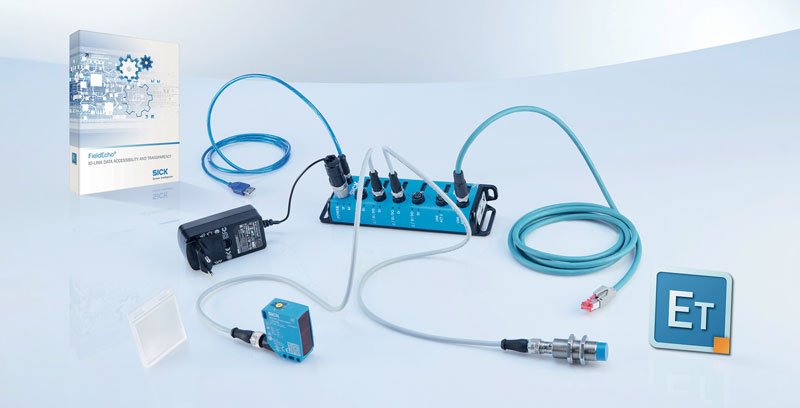A Software Bridge between Machines and IT
The IO-Link protocol alone is not enough: a dedicated software is needed to access the transmitted data. To do this, SICK offers FieldEcho, a software tool able to monitor and parameterize the IO-Link sensors of any type of plant. The data collected has an important function, as it opens the door to predictive maintenance operations.
by Maria Giulia Leone
One of the great advantages of IO-Link is the increased availability of data related to the sensors and devices that implement it. As useful as it may be, IO-Link is “only” a point-to-point communication protocol that allows the bidirectional exchange of this information. Therefore, we need a tool that makes access this very important data or to parameterize sensors possible, regardless of their type or brand, such as the new FieldEcho software from SICK. It is a tool for Windows operating systems that improves the accessibility and transparency of data (be it process or service data) coming from any installed IO-Link device.
One device keeps the whole line under control
FieldEcho gives the possibility to parameterize and monitor all IO-Link sensors connected in the system, whatever their type and brand. The operations are simple: once installed, the software connects via Ethernet network to the PLCs via OPC UA or TCP/IP protocol and automatically maps the IO-Link devices installed on the machine, downloading the respective IODD (IO-Link Device Description) files from the official consortium database. The mapping allows an easy setting of the device parameters, making available the description of each single parameter. A great advantage for machine builders who until now had to do this step manually.
In addition to saving time during commissioning, FieldEcho also optimizes access to data during machine operation, since the information of interest can be displayed in a single dashboard. At this point, the data collected by the sensors, be it process data (information read and transmitted from the sensor to the master such as distance detected by laser measurement sensors), service data (sensor information such as model, serial number, device description) or diagnostic data (error messages or maintenance warnings such as dirty optics), can be made available to a higher level software. Simply put, FieldEcho functions as a bridge between the machine and IT.
Doors wide open for predictive maintenance
The data aggregated by FieldEcho is primarily used to set rules on the parameters of interest. For example, each user can set thresholds and alarms so that actions can be unlocked if the warning parameters are exceeded. Secondly, the study of operating data opens the doors to predictive maintenance: knowing the current status of the components, it is possible to intervene to clean or replace parts only in case of real need, with a consequent economic saving compared to preventive maintenance.
Finally, thanks to the REST API protocol, the data collected is also available at a higher level as ERP (Enterprise Resource Planning) software, MES (Manufacturing Execution System) or cloud data analysis applications, and not only for pure automation purposes.
IO-Link is increasingly growing across industry
FieldEcho can be used in any application and sector, from packaging to automotive, from chemicals to consumer goods, from pharmaceuticals to food&beverage, without any limitation.
As a promoter member of the IO-Link consortium since its inception, SICK is increasingly committed to integrating this protocol into all the solutions offered, so that its customers always have everything under control. A growing trend, as demonstrated by the fact that the IO-Link nodes brought to the market by the consortium in 2018 have grown by 30% compared to the previous year; an unstoppable growth that will require automatic access to the data available thanks to IO-Link and that, consequently, will require software for their management, such as SICK’s FieldEcho.

